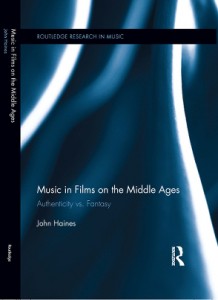This book explores the role of music in the some five hundred feature length films on the Middle Ages produced between the late 1890s and the present day. Haines focuses on the tension in these films between the surviving evidence for medieval music and the idiomatic tradition of cinematic music. The latter is taken broadly as any musical sound occurring in a film, from the clang of a bell off -screen to a minstrel singing his song. Medieval film music must be considered in the broader historical context of precinematic medievalisms and of medievalist cinema’s main development in the course of the twentieth century as an American appropriation of European culture. The book treats six pervasive moments that define the genre of what could be called medieval film: the church-tower bell, the trumpet fanfare or horn call, the music of banquets and courts, the singing minstrel, performances of Gregorian chant, and the music that accompanies horseriding knights, with each chapter visiting representative films as case studies. These six signal musical moments create a fundamental visual-aural core that is central to making a film feel medieval to modern audiences, and these musical stereotypes originate in medievalist works predating cinema by some three centuries.”
For more information, visit the publisher’s website.
Publication Type
- Book



